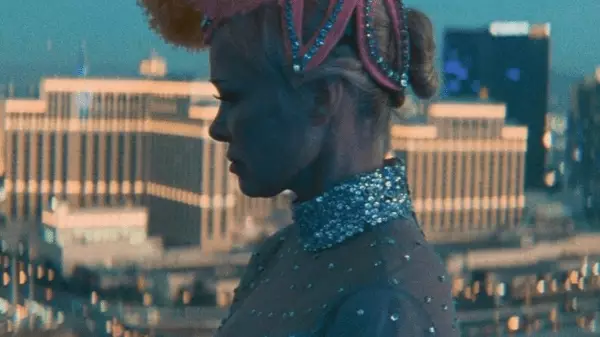Pamela Anderson, an iconic figure of the 1990s, is making a notable return to the silver screen in the film “The Last Showgirl,” directed by Gia Coppola. The film, penned by Kate Gersten, is set to premiere in theaters on December 13, and it comes at a significant juncture in Anderson’s life—just after the release of her revealing Netflix documentary, “Pamela, a Love Story.” This documentary sheds light on the complexities of her life, showcasing her transformation from a misunderstood pop culture symbol into a woman reclaiming her narrative and agency.
Gia Coppola’s vision for “The Last Showgirl” was heavily influenced by Hollywood’s legendary actresses, particularly Marilyn Monroe. In interviews, Coppola mentioned her fascination with these remarkable women who challenged societal norms. She muses about the intriguing possibilities of roles that could have been played by Monroe, reflecting her desire to create meaningful characters in contemporary cinema. Drawing parallels between Anderson and Monroe, Coppola refers to Anderson as the “Marilyn of our time,” underscoring the ongoing relevance of these actresses within the cultural zeitgeist. This comparison not only amplifies Anderson’s significance in the storytelling but also highlights the struggles that come with fame and aging in an industry that often prioritizes youth.
In “The Last Showgirl,” Anderson takes on the role of Shelley, a Las Vegas performer facing a devastating crossroads when her long-running show is abruptly canceled. At the heart of the story is Shelley’s battle against ageism and the pressures that come with the entertainment industry’s often superficial demands. As she strives to reconnect with her daughter, Hannah, portrayed by Billie Lourd, Shelley embodies the complexity of a woman torn between past acclaim and the desire to forge a new identity.
Anderson has expressed that playing Shelley felt deeply personal, resonating with her own experiences in a ruthless industry. She noted the character’s yearning for authenticity and self-expression, mirroring her own journey of self-discovery and acceptance. “This role was meant for me,” she stated, indicating her emotional investment in the character and script. This film potentially marks a renaissance not only for Anderson’s career but also for the representation of mature women in film, showcasing their stories as rich and intricate, rather than dismissing them due to age.
Coppola’s direction aims to affirm the complexity of women in media, as Anderson’s character navigates the landscape of motherhood, career obstacles, and personal reinvention. The portrayal of Shelley serves as a powerful lens through which audiences can explore the intersections of femininity, vulnerability, and strength. “The Last Showgirl” promises to evoke empathy and provoke discussions around the often overlooked narratives of women in entertainment, both past and present.
Pamela Anderson’s return, under Coppola’s insightful guidance, speaks volumes about resilience in Hollywood. As they collaborate to tell a nuanced story of struggle, growth, and empowerment, audiences are invited to reconsider how they view iconic figures like Anderson and the ever-evolving story of womanhood in the entertainment industry.

